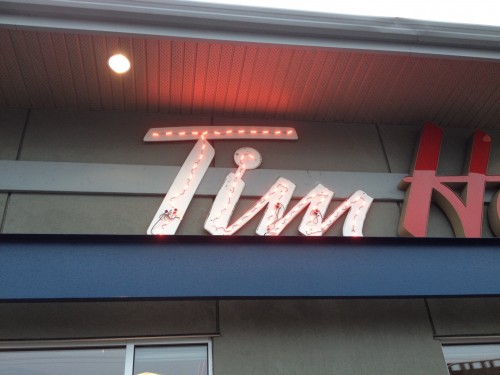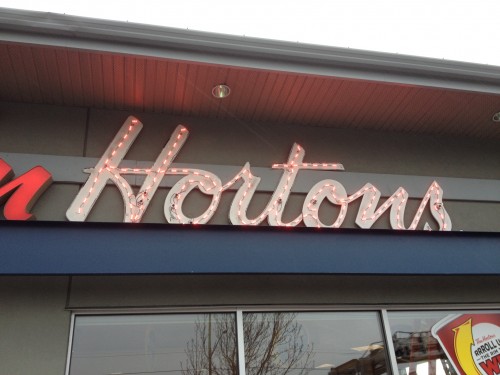Sign type
There are many different styles of LEDs, even just among those marketed to the sign industry. Some are intended for backlit signs, others for exposed lettering and some for double-sided signs.
One factor that plays a major role is how far the sign face will sit away from its source of illumination. ‘Hot spots’ may appear when certain LEDs are installed too close to the face, while others will make for a dull appearance when installed too far away. In some cases, it may be preferable to mount LED modules to the sides of a sign can, directing the light toward the centre before diffusing it toward the sign face.
Colour temperature
As with fluorescent lamps, there are different LED colour temperatures, ranging from warm white to ‘daylight,’ which can have a major impact on how signs appear when illuminated with certain colours. A daylight LED would not be a good fit for some yellows, for example, where it can cause a distorted green appearance. And with the wrong colour temperature, a sign can appear one colour by day and a different colour by night.

 Re-lamping an entire sign, rather than replacing individual components as needed, will help prevent inconsistent lighting levels across the sign face.
Re-lamping an entire sign, rather than replacing individual components as needed, will help prevent inconsistent lighting levels across the sign face.
Light intensity
Another LED specification is light intensity or ‘illuminance,’ as measured in lumens per foot. This is an important specification to consider, but there will not be much visible difference over a 10 to 20-lumen difference per foot. Also, all manufacturers’ LEDs are getting brighter, so insufficient light intensity is less of a concern than it used to be.
Wattage
The electrical power needed to operate a LED is measured in wattage per foot. The higher the wattage, the larger the power supply—or the higher the number of power supplies—that will be needed to light the sign. In some sign designs, there is not enough room for multiple power supplies, which is why wattage needs to be considered while choosing LED products.
Installation and service
While one of the primary advantages of LEDs is their ease of installation and service compared to neon or fluorescent lighting, not all LEDs are equal in this respect. Depending on the application, there may be a need for more labour and additional expenses, e.g. buying special brackets for mounting the LEDs. When choosing LEDs and associated hardware, it is important to consider savings in time and money.
Choosing the right installer
LED installation is simpler than handling neon or fluorescent lamps, but while some sign shops are handling the process with in-house staff, others prefer to outsource the work to specialized sign maintenance and service companies. When choosing the latter option, there are a few factors to keep in mind to help choose the right company:
Warranty
Just as it is important to ensure an LED manufacturer can honour its product warranty, so too is it important to ensure the sign service company can honour a labour warranty for completed jobs.
Rebates
Some municipal governments, business improvement areas (BIAs) and electrical utility companies offer rebates for retrofitting signs with LEDs. The company that installs the LEDs should be aware of any available rebates and ensure the sign shop receives those to which it is entitled.





